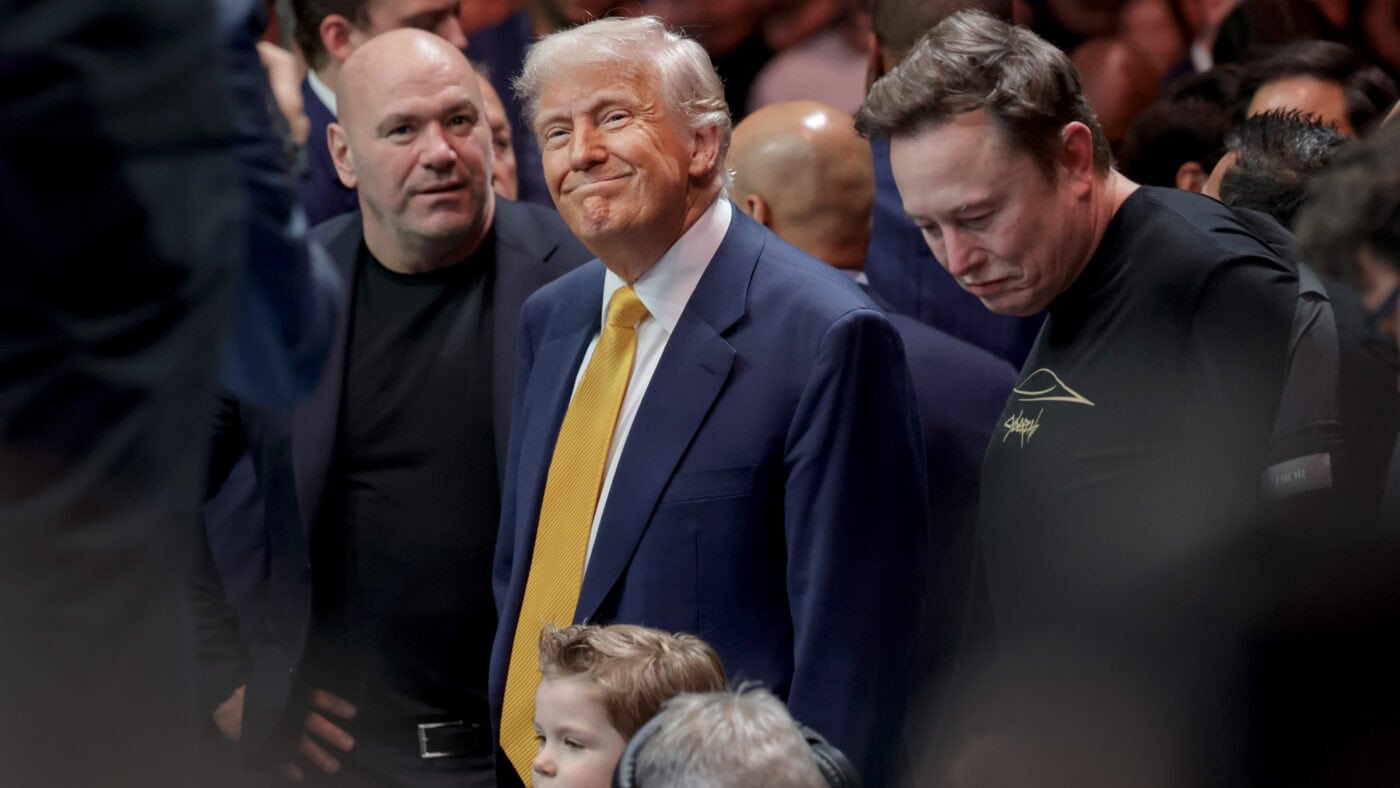Under one particularly charitable reading, Donald Trump’s discontent with the global financial status quo, reflected in his administration’s drastic trade policies, is a response to the pressure that a chronically overvalued dollar puts on the competitiveness of US industry.
As the prospect of a likely trade war-induced recession shows, tariffs carry large economic costs, including for sectors that the administration is purporting to help. Trump’s team would be well advised to look for alternatives. In doing so, it can learn from the example of countries who were successful in restoring their international competitiveness by cutting deficits, and by embracing structural reforms and wage moderation.
As an aside, the US dollar’s central role in the global economy is not without its upside for Americans and the US government. The ubiquity of the dollar strengthens US sanctions policy, provides funding for business investment, and through low borrowing costs, it allows both the federal government and US households to live beyond their means. The US share of household consumption on income is roughly double that of similarly wealthy economies, such as Norway, Singapore or Luxembourg.
Those who see the status quo as a problem, such as the chair of the Council of Economic Advisers, Stephen Miran, argue that the upward pressure on the dollar’s exchange rate has been a driving force behind America’s industrial decline, with serious economic and national-security implications.
The merits of that contention can be debated. For one, US manufacturing output is at an all-time high and the gradual decline of manufacturing’s share of employment is not wildly different from other advanced economies, whose currencies do not enjoy the same ‘exorbitant privilege’ as the US dollar. Yet, what is beyond reasonable disagreement – especially in light of Trump’s ongoing trade-war fiasco – is that high tariffs, haphazardly applied, are a singularly ill-advised answer to the problem.
Setting aside retaliation by their trading partners, tariffs are bound to make US manufacturing less competitive, insofar as American industry relies on international supply chains – and thus uses inputs that are now subject to tariffs of 10% or more. The prohibitive tariff rate imposed on China, moreover, means that US-based firms are no longer able to rely on Chinese manufacturing to the same extent as their competitors in Europe and around the world.
The Chinese, meanwhile, have every reason to try to get around those tariffs by moving some of their production to countries not subjected to the same tariff barriers. As a result, the tariff will bring China economically closer to both our adversaries and our partners – hardly a geopolitical win for Washington.
There is another path that is guaranteed to improve America’s economic prospects without the economic burden of tariffs and irrespective of the international reaction to them: fiscal consolidation and structural reforms.
The American situation is unique in many ways. Yet, the US is not first economy in history to suffer from a competitiveness problem because of a rigid monetary or foreign exchange arrangement. When Greece and other countries of the Mediterranean periphery joined the Eurozone, they too got an overvalued currency, and low borrowing costs were used to fuel public spending sprees and asset price bubbles.
Following the crisis years spanning between 2008 and 2015, Greece enacted a program of fiscal consolidation, balancing the budget and bringing down its debt burden from close to 200% of GDP by almost 50 percentage points – reducing its trade deficit in the process. Further progress has been disrupted by the pandemic, of course, but Greece’s economy today is in a more robust shape than at the beginning of the Great Recession.
The early and rapid response of the Baltic states to the financial crisis reflected their commitment to joining the Euro. As a result, instead of devaluing their currencies, they enacted dramatic budget cuts as well as structural reforms improving their business environments. The sudden adjustment was not a free lunch – Latvia’s unemployment rate jumped to almost 20% in 2010 – but what resulted were extraordinarily speedy recoveries and some of the fastest growth rates anywhere in Europe.
The United States is not faced with the same economic pressure. Yet, the federal government, with a debt burden of 120% of GDP, running an annual deficit north of 6% of the nation’s income, and now facing accelerating borrowing costs, should be thinking about bringing its public finances on a sustainable path before it gets too late.
Cuts to discretionary spending are not enough, regardless of whether one thinks that DOGE is a serious effort to cut spending and prune bureaucracy. Congress will have to enact parametric changes to America’s retirement and medical entitlements to bring the cost in line with looming demographic change.
Incidentally, cutting deficits and public debt means that the outside world would be able to hoard fewer US bonds, also reducing the problem of external imbalances. Of course, the two deficits – the fiscal and the external one – do not necessarily go in tandem. In the 1990s, as the federal budget came close to being balanced, the external deficit did not close with it; instead, foreign investment continued to flow into the private sector.
Ideally, such investment – together with domestic savings – should be used to build productive capacity, instead of being parked in real estate, land, or purely speculative assets. For that, the US needs to enact a serious program of structural reforms – reforming the National Environmental Policy Act and streamlining the review processes that are driving costs of construction far above those of similarly developed nations.
The US economy is not without its strengths – it has low energy costs, a large internal market and leads the world in R&D and finance ecosystems. But it can obviously do better, including by embracing a relatively open and welcoming immigration policy, which would be necessary to moderate growth of real wages – a fundamental condition for regaining international competitiveness.
Admittedly, many of these policy ideas sound fanciful in the current political environment, in which politicians of both parties have soured on what they see as obsolete ‘neoliberal’ dogma. Yet, as the failure of Trump’s trade war against the rest of world illustrates, the only alternative to the politically impossible is usually the economically suicidal. One can only hope that the United States will not have to taste a full dose of the latter to give the former a serious try.
Click here to subscribe to our daily briefing – the best pieces from CapX and across the web.
CapX depends on the generosity of its readers. If you value what we do, please consider making a donation.


